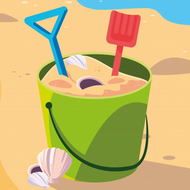All About Meeko
(View Complete Item Description)It's Meeko's time to shine! This week's Wildlife Wednesdays feature put the spotlight on one of your favorite animal ambassadors: Meeko, the albino raccoon! Chief Wildlife Officer Harvey Webster and Animal Programs Coordinator Nicole Episcopo gave us a behind-the-scenes look at enrichment and training for our bushy-tailed friend, and shared fun facts about thie Ohio-native species.
Material Type: Lecture




















